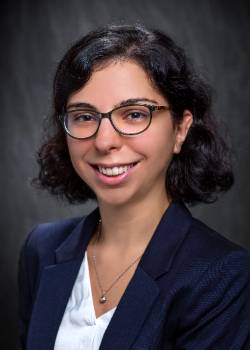LSU ME Professors Receive IEEE Grant for Online Lecture Videos
June 8, 2021
 BATON ROUGE, LA – The COVID-19 pandemic has forced university educators to think outside
of the box and find a way to teach their students remotely while also keeping them
interested in learning. Thanks to a $17,000 grant from the Institute of Electrical
and Electronics Engineers (IEEE), LSU Mechanical Engineering Assistant Professor Hunter
Gilbert has done just that with the help of LSU ME Professors Marcio de Queiroz and
Corina Barbalata.
BATON ROUGE, LA – The COVID-19 pandemic has forced university educators to think outside
of the box and find a way to teach their students remotely while also keeping them
interested in learning. Thanks to a $17,000 grant from the Institute of Electrical
and Electronics Engineers (IEEE), LSU Mechanical Engineering Assistant Professor Hunter
Gilbert has done just that with the help of LSU ME Professors Marcio de Queiroz and
Corina Barbalata.
“When COVID-19 started, we were all forced online very suddenly,” Gilbert said. “It became evident pretty quickly that pre-recording 80-minute lecture videos doesn’t engage the students in the same way as it does when they are in the classroom. It’s very difficult to get that same level of engagement online.”
According to YouTube analytics, most people have a hard time paying attention to a pre-recorded video, especially of an academic nature, for more than 10 minutes.
“You can see as clear as day what percentage of your viewers are still there at a specific minute in the video,” Gilbert said. “It’s a steadily dropping curve and by 20 minutes, half of the viewers are gone.”

With the support of the IEEE grant, Gilbert’s team proposed producing 52 shorter videos of six to 10 minutes in length that cover a single topic, rather than breaking it up by the lecture period, similar to a text book.
“A student would have to watch multiple videos, but now they have an opportunity to do it in a way that is a little more convenient for them,” Gilbert said. “Maybe it holds their attention better as well.”
The videos will incorporate certain strategies to promote attention, Gilbert said. One example is changing the narrator or scene. Gilbert, de Queiroz and Barbalata will narrate the videos, which fall under the core undergraduate course ME 4183 Classical Control Theory. Rather than use a blackboard strategy with having tons of equations appear and stay on the screen, the team will use a variety of active strategies, such as video clips, animations, historical facts, text, equations, and links to other videos. Students will have the ability to pause, re-watch, adjust the speed, and enable/disable closed captioning for each video as needed.
Gilbert, who is the principal investigator on this project, had previously worked with the LSU MIE department to pre-record lectures for a university in Jakarta, Indonesia, to offer its students remote courses. He uploaded some of those videos to YouTube and provided links to those students, as well as LSU students.
 “YouTube has an archival quality,” Gilbert said. “The first videos that were uploaded
in 2005 are still there. The videos we do will be a permanent resource.”
“YouTube has an archival quality,” Gilbert said. “The first videos that were uploaded
in 2005 are still there. The videos we do will be a permanent resource.”
The big question is will these videos be relevant with students coming back to campus in the fall? Gilbert says the videos give instructors the option to flip the classroom and spend less time lecturing and more time on interactive activities, or they can be provided as a study resource.
“The more people that get to watch these videos, the more impact we’ve had,” Gilbert said.
Like us on Facebook (@lsuengineering) or follow us on Twitter and Instagram (@lsuengineering).
###
Contact: Libby Haydel
Communications Specialist
225-578-4840